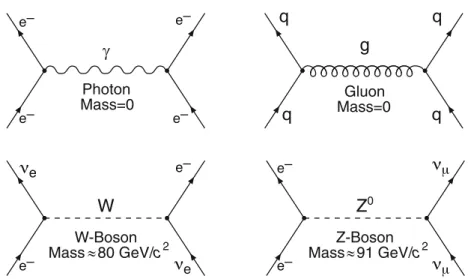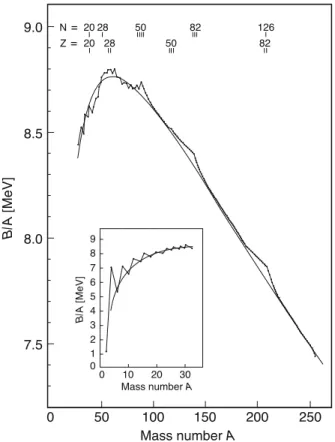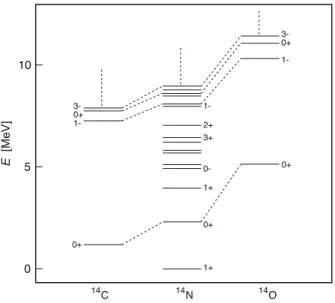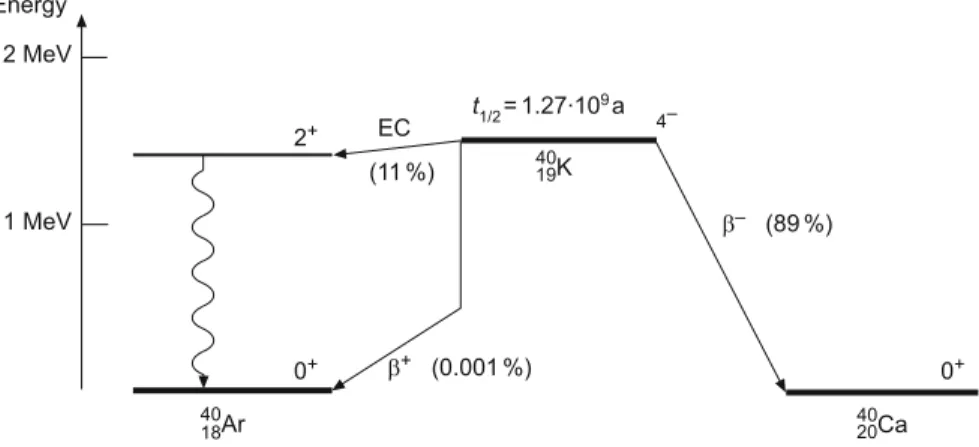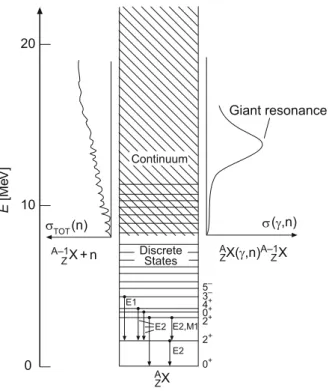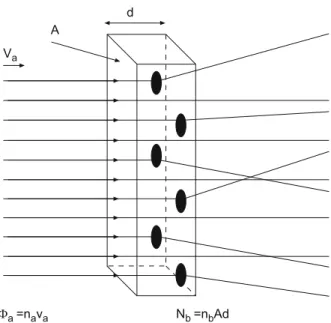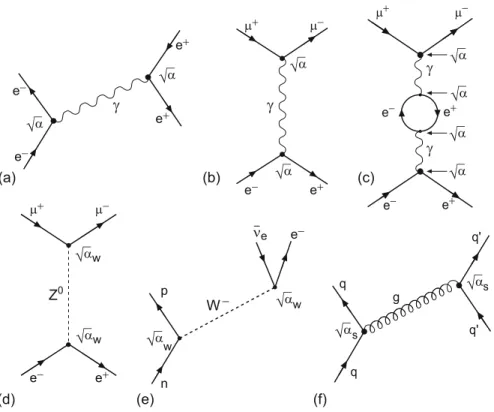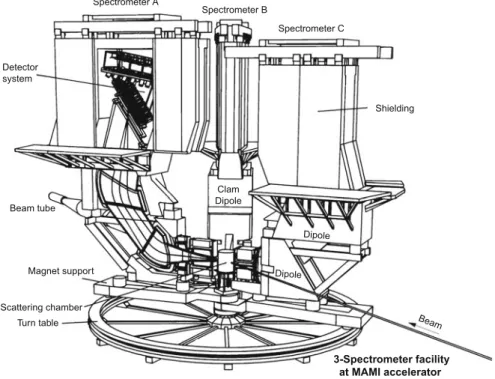Since the first German edition of this textbook in 1993, many extensions and corrections have been added to the text in each subsequent edition. Lavelle (Barcelona) has translated the majority of the book and put it in the current linguistic form.
Hors d’œuvre
Fundamental Constituents of Matter
Leptons and Quarks The two basic types of building blocks are leptons, which include the electron and neutrino, and quarks. Today, however, we know of six leptons and six quarks, as well as their antiparticles.
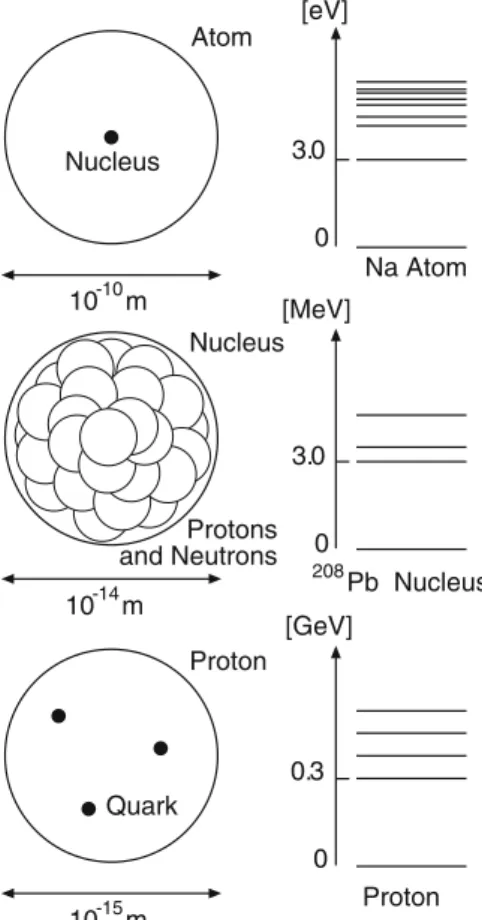
Fundamental Interactions
W W-Boson
Z 0 Z-Boson
Symmetries and Conservation Laws
Experiments
The resulting diffraction pattern of the scattered particles gives the size of the nucleus quite precisely. Scattering experiments to determine the size of a system and to produce excited states require similar beam energies.
Units
Spectroscopy The term "spectroscopy" is used to describe those experiments that determine the decay products of excited states. In this way, one can study the properties of the excited states as well as the interactions between the ingredients.
Analysis
The Building Blocks of Matter
Global Properties of Nuclei
- The Atom and Its Constituents
- Nuclides
- Parametrisation of Binding Energies
- Charge Independence of the Nuclear Force and Isospin
In a neutral atom, there are electrons in the electron cloud that regulate the charge of the nucleus. In general, the global properties of the nuclear force are quite well described by the mass formula (2.8).
![Fig. 2.1 Doubly focusing mass spectrometer [5]. The spectrometer focuses ions of a certain specific charge to mass ratio Q = M](https://thumb-ap.123doks.com/thumbv2/123dok/10252953.0/27.659.125.539.84.371/doubly-focusing-spectrometer-spectrometer-focuses-certain-specific-charge.webp)
Problem
Nuclear Stability
- Beta Decay
- Alpha Decay
- Nuclear Fission
- Decay of Excited Nuclear States
It is interesting to find the charge numberZamb which nuclei become fission unstable, i.e., the point from which the mutual Coulombic repulsion of the protons exceeds the attractive nature of the nuclear force. For a constant volume V(VD4R3=3D4ab2=3), the surface energy of the nucleus increases and its Coulomb energy decreases.
![Fig. 3.1 Beta-stable nuclei in the Z N plane (From [1])](https://thumb-ap.123doks.com/thumbv2/123dok/10252953.0/37.659.124.532.93.385/fig-beta-stable-nuclei-z-n-plane.webp)
Problems
However, for excitation energies above the particle threshold, the lifetimes of the states decrease dramatically and their widths increase. Saturn's separation from the Sun is 9.5 AU; 1 AU = Earth's separation from the Sun. one).
Scattering
- General Observations About Scattering Processes
- Cross-Sections
- The “Golden Rule”
- Feynman Diagrams
For a Gaussian distribution of the beam particles around the beam center (with horizontal and vertical standard deviations xandy respectively) A is given by. The straight lines in the graphs correspond to the wave functions of the initial and final fermions.
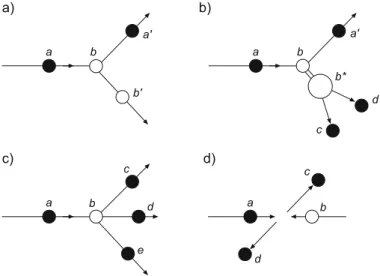
Geometric Shapes of Nuclei
- Kinematics of Electron Scattering
- The Rutherford Cross-Section
- The Mott Cross-Section
- Nuclear Form Factors
- Inelastic Nuclear Excitations
Here, Ef is the total energy (kinetic energy and rest mass) of the final state. In the scheme (5.33), the dependence of the cross section on the momentum transfer is clearly expressed. The rapid decrease of the cross section at large angles corresponds to the 1=jqj4 dependence.
This behavior of the cross-section means that F.q2/and the charge distribution %.r/ can be determined very accurately.
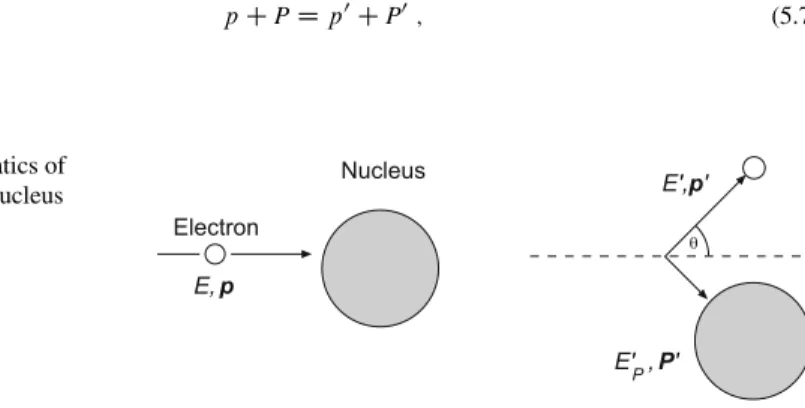
Elastic Scattering Off Nucleons
Form Factors of the Nucleons
The measured Q2 dependence of the shape factors gives us information about the radial distributions of charge and magnetization. The mean square radii of the charge distribution in the proton and of the magnetization distributions in the proton and the neutron are equal. Exact measurements of the shape factors at small values of Q2 show slight deviations from the dipole parametrization.
An elegant approach has been developed to determine the charge radius of the free neutron.
![Fig. 6.1 Proton and neutron electric and magnetic form factors as functions of Q 2 . The data points are scaled by the factors noted in the diagram so that they coincide and thus more clearly display the global dipole-like behaviour [9]](https://thumb-ap.123doks.com/thumbv2/123dok/10252953.0/88.659.250.578.93.363/proton-neutron-electric-magnetic-factors-functions-coincide-behaviour.webp)
Quasi-elastic Scattering
Calculations within the framework of different models give a similar radial dependence of the neutron charge density [17]. From the broadening of the maximum compared to elastic scattering of free protons in the hydrogen atom, we conclude that the nucleus is not a static object with locally fixed nucleons. We now assume that the motion of the nucleons within the nucleus is isotropic (ie a spherically symmetric distribution).
Studies of the A dependence of S and PF were first performed in the early seventies.
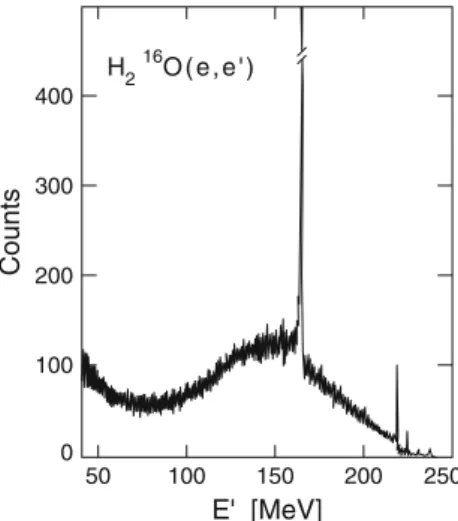
Charge Radii of Pions and Kaons
86 6 Elastic scattering of nucleons We see that the pion and the kaon have a different charge distribution than the proton; it is notably less distributed. This can be traced back to the fact that the kaon, unlike the pion, contains a heavy quark (an s-quark). In Sect.14.5 we will demonstrate in a heavy quark-antiquark system that the radius of a system of quarks decreases as the mass of its constituents increases.
Explicitly write Q2 the dependence of the shape factor on the cross-section in the limit Q2!0 assuming that hr2i D0:44fm2.
Deep-Inelastic Scattering
- Excited States of the Nucleons
- Structure Functions
- The Parton Model
- The Quark Structure of Nucleons
- Interpretation of Structure Functions in the Parton ModelModel
In Chapter 16, we will explain the structure of these resonances in the framework of the quark model. It is calculated from the four moments of the exchanged photon (q) and the incoming proton (P) according to. The structure of the proton is then given to a first approximation by the longitudinal moments of its components.
These charges of the quarks are not unequivocally determined by the charges of the proton and neutron.
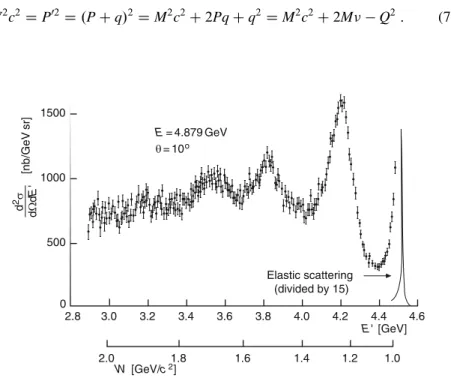
Quarks, Gluons, and the Strong Interaction
- Quarks in Hadrons
- The Quark-Gluon Interaction
- Scaling Violations of the Structure Functions
- Flavour-separated Parton Distributions
- Nuclear Effects in Deep-Inelastic Scattering
In Fig.8.4 the different Q2 behavior of the electromagnetic and strong coupling constants are shown. One of the textbook deep-inelastic scattering events at detector H1 is shown in Fig.8.6. In the first approach, the effect is attributed to a modification of the quark and gluon distributions in
In the rest system of the nucleus its diameter is DA and the average nucleon distance is d2fm.
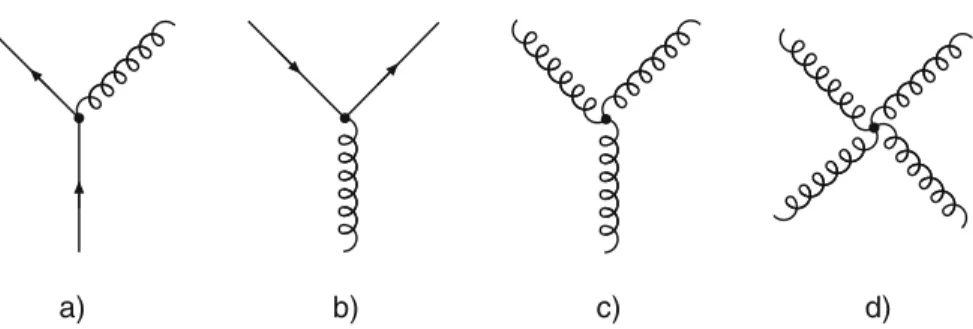
- Lepton Pair Production
- Resonances
- Non-resonant Hadron Production
- Gluon Emission
Here, the energy of the center of mass increases only in proportion to the square root of the beam energy. If the cross sections for the formation of muon pairs and hadrons in eCesapration are plotted as a function of the energy of the center of the masep. Therefore, the cross-section is given by the sum of the individual cross-sections of the creation of quark-antiquark pairs.
Here, only those quarkf types that can be produced at the center-of-mass energy of the reaction contribute to the sum over quarks.
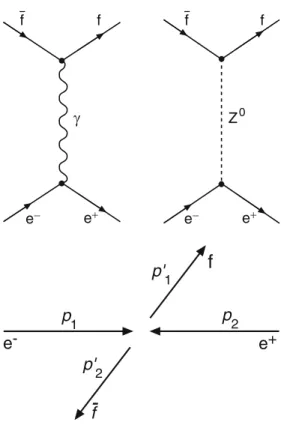
Phenomenology of the Weak Interaction
Properties of Leptons
140 10 Phenomenology of the weak interaction The electron and the muon are the lightest electrically charged particles. The masses of neutrinos are still unknown, we only know the differences of their squared masses. Conservation of lepton number In all the reactions we mentioned above, the creation or annihilation of a lepton was always accompanied by the creation or annihilation of an antilepton of the same flavor family.
As with the baryons, we therefore have a conservation law: in all reactions the number of leptons of a particular family minus the number of the corresponding antileptons is conserved.
The Types of Weak Interactions
A prominent example is the ˇ-decay of a neutron (Fig.10.3) which can be reduced to the decay of a d-quark in which the two other quarks are not involved. Anti-)Neutrinos were first detected directly in the first of these reactions [10] – antineutrinos from the decay of neutron-rich fission products were seen to react with hydrogen. The second reaction can be used to detect solar and stellar neutrinos resulting from ˇC decay of proton-rich nuclei produced in fusion reactions.
Examples are the hadronic decays of baryons and mesons with strangeness, such as the decay of the ƒ0hyperon into a nucleon and a pion, or that of KC.us/into two pions (Fig.10.4).
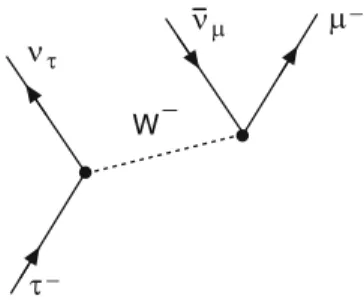
Coupling Strength of the Weak Interaction
We can discuss the effects of the effective GF coupling strength on the cross section of this reaction and show why the weak interaction is called "weak". For small four moments, the total electron neutrino scattering cross section is proportional to the square of the effective coupling constant GF. The only difference between the two interactions is the mass of the two exchange bosons.
In electron-positron annihilation (Fig.10.9(left)) or for electron-quark scattering (Fig.10.9(right)) a superposition of the weak and the electromagnetic interactions takes place.
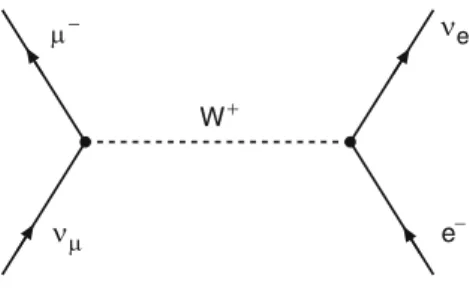
The Quark Families
152 10 Phenomenology of the weak neutron interaction, the coupling constant appears to be about 4 % smaller. Similarly, the c quark's partner is an orthogonal linear combination ijsiandjdi, tojd0i, which we calljs0i. 154 10 Phenomenology of Weak Interaction The diagonal elements of this matrix describe transitions within a family; they deviate from unity by only a few percent.
The values of the matrix elementsVcband Vts are almost one order of magnitude smaller than those of VusenVcd.
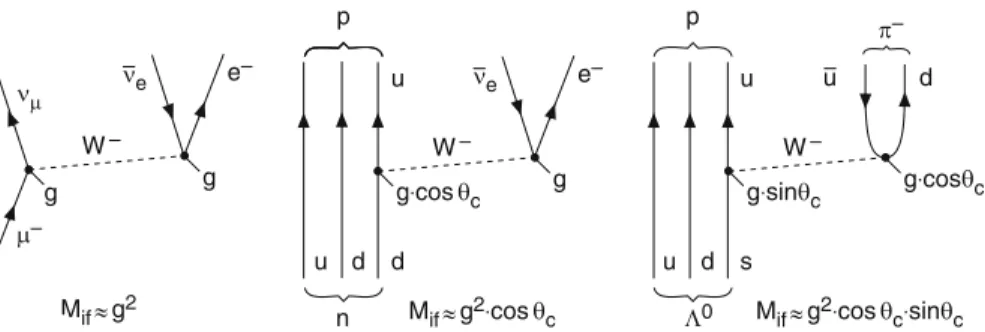
Parity Violation
156 10 Phenomenology of the Weak Interaction Experimentally, it is observed that electrons from polarized muon decay are preferentially emitted with their spin opposite to their momentum; that is, they are left-handed. The ratio of the vector to axial vector strengths can be determined from the angular distribution [6]. Since the pion has zero spin, the spins of the two leptons must be opposite to each other.
Therefore, the left-hand component of the electron is much smaller than that of the muon, and electron decay is accordingly strongly suppressed.
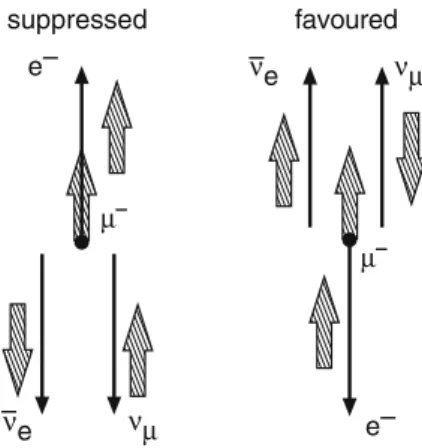
Deep-Inelastic Scattering with Charged Currents
Figure 10.15 shows the dependence of the differential cross-section d=dy as a function of y upon integration over x. In chapter 7 we expressed the cross section for deep inelastic scattering of charged leptons from nucleons (7.10) in terms of the two structure functions F1.x;Q2/ and F2.x;Q2/. In Fig.10.16, data from second-generation deep inelastic scattering experiments with muon rays (BCDMS, BFP, EMC) and neutrino rays (CCFRR, CDHSW, CHARM) are presented as a function of x in the Q2 range 10–100. GeV=c/2.
In fig. 10.18, the charge-current cross sections CC for electrons and positrons are shown as a function of the degree of longitudinal polarizationPe[1].

Neutrino Oscillations and Neutrino Mass
- Lepton Families
- Neutrino Oscillations
- Neutrino Oscillation Experiments
- Majorana Neutrinos?
The prediction of the solar standard model (shown here with theoretical uncertainty) lies within the dashed lines. They originate from the other side of the Earth and have therefore traveled around 104 km. We have abbreviated herec212 D cos212,s212 D sin212 etc.4 The smaller of the two oscillation lengths is proportional to1=jm232j.
The interaction between Nand now leads to a suppression of the neutrino mass, in the form of
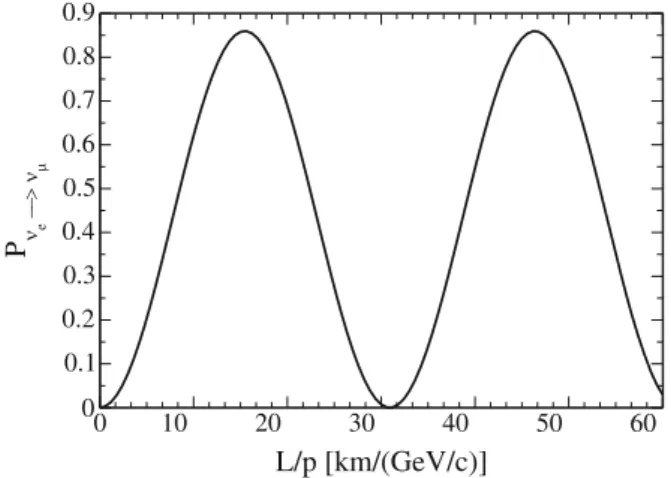
Exchange Bosons of the Weak Interaction and the Higgs Boson
Real W and Z Bosons
This allowed accurate measurement of the W-mass and decay products of the WCW pairs. The transverse energies of the electron and positron detected in the calorimeter elements are plotted as a function of the polar and azimuthal angles [7]. To measure their contribution, the cross-sections of all other fakes are measured and compared to the total width of the Z0boson.
Here, i is the fractional width of the initial channel (the fractional width for decay Z0 !eCe) and f is the fractional width of the final channel.
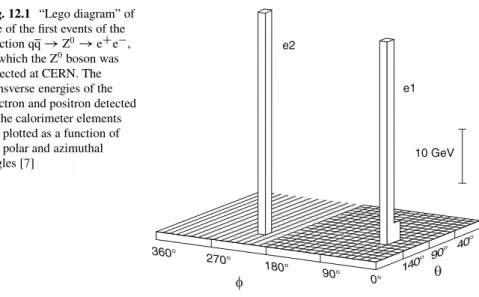
Electroweak Unification
